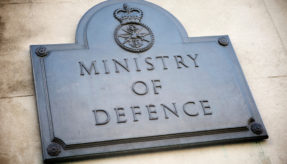
The defence landscape is continually evolving, and new threats are emerging and evolving faster than new capabilities can enter into service or be upgraded. Here, David Tuddenham, Group Managing Director at Chess Technologies, says that, while the defence procurement process can slow the pace of development, forward-thinking capability design and agile SMEs can help forces obtain the operational advantage, particularly when it comes to surveillance.
Evolving threats
The military environment is in a state of change. New and evolving threats from and sophisticated military capability deployment by hostile state actors, have resulted in the need for persistent and reliable surveillance both on land and at sea. Surveillance not only needs to provide high quality and reliable intelligence at long range, it also must operate in the harshest of conditions, such as the freezing temperatures of the tundra or the humidity and saline environment of the southern oceans.
In addition, military forces are also experiencing great change, and the breadth of threats to contend with means they are required to think more carefully about resource. This approach relies on a concerted effort being directed to reducing the operational burden placed on personnel as far as possible. With further reductions planned in UK army personnel to 72,500 by 2025, capability needs to work consistently hard.
However, keeping pace with these constant changes is a challenge. Capabilities are expensive to maintain, upgrade or enhance once installed, so become ‘old’ faster than expected.
Keeping up with the pace of change
In the UK, the defence procurement process for platforms has been debated widely, centred on whether defence capability should be considered in terms of platform vs systems.
Another crucial factor is the speed at which procurement programmes operate. The start of the procurement process to the final platform completion can often take more than a decade. This not only means that the latest technology at the beginning of the process could be deemed old before it enters service, it also clearly highlights how challenging it is for innovative new capabilities to be entered into service to counter new threats at the speed required.
The third challenge with current procurement processes is that capabilities are traditionally designed in a way which means that upgrades and maintenance need to be carried out by a single supplier. This not only limits the ability of the platform to be quickly repaired or easily upgraded, given this process is reliant on a single party, but it can also be costly in terms of both finances and time. An example to illustrate this is when vessels need to return to dock for long periods of time for maintenance, when the capability could be repaired at sea by operators.
A modular, flexible future
So, is a different way of thinking needed?
In short, yes there is, and it’s crucial for the ability to combat new threats that this is treated urgently. A new approach to capability design – which enables easier maintenance by operators and quicker, more cost-effective upgrades to keep pace and counter emerging threats – is possible, and it’s happening right now.
Returning to our theme of surveillance, let’s take an example. The Hawkeye Modular Mission POD (MMP) from Chess is a highly stabilised, long-range surveillance plug-and-play solution that can track targets accurately even in challenging environmental conditions. The system is highly reconfigurable due to its modular, open architecture which enables the capability to be rapidly and easily adapted to many tactical situations.
Added to this, sensors can be upgraded throughout its design life and technology insertion can be achieved through reconfigurable payload options for surveillance, targeting and counter-unmanned aerial systems (C-UAS) scenarios. The modular, open architecture of Hawkeye MMP enables rapid interchangeability for multi-role missions, provides significant cost-saving opportunities for future mission module changes and supports sensor re-fresh programmes.
From this example, it’s clear that modular design, which enables additional sensors or cameras to be incorporated into a surveillance capability, means that components can be easily removed, repaired or switched out, dependent on the specific operational need. This means that, if a camera needs maintenance, rather than return to dock for repair, operators can replace the module with a spare and continue with the operation. The unique architecture allows the sensors and cameras to be housed in an all-weather condition proof solution, enabling it to operate reliably in all environments. With this design approach proven in-service, modular solutions have the ability to reduce total cost of ownership throughout its lifespan.
The approach to capability design also offers another unique benefit to the forces, as it allows for the integration of any camera or sensor. Removing challenges surrounding integration of several manufacturers’ technology, as well as reliance on a single technology provider, this approach ensures that the most appropriate components for the application are used. For example, this could include replacing a standard definition camera with a high definition (HD) alternative, for operations where reconnaissance and surveillance are of paramount importance.
This has resulted in surveillance solutions that can be remotely controlled and offer an autonomous 24/7 provision which are becoming increasingly vital in today’s operational environment.
As the Ministry of Defence is yet to publish its equipment plan for 2021-2031, now is the ideal opportunity for the procurement process of capability to be reconsidered, so that we can ensure innovative solutions enter service as quickly as possible. This will not only enable us to counter ever-increasing threats more effectively, but also aid the shift toward modular and flexible capabilities that allow for easier and more cost-effective through-life maintenance, repairs, and upgrades.
By partnering with a forward-thinking and agile SME such as Chess, new capabilities with unique design approaches can be delivered that offer high performance with a lower total cost of ownership throughout their lifespan.
For more information visit: https://www.chess-dynamics.com/
If you would like to join our community and read more articles like this then please click here.







